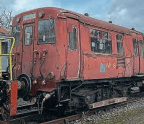SCALE
British N – a rapidly expanding empire!

THERE is no doubting the fact that 4mm scale OO gauge modelling is by far the most dominant in Britain today, but what of the smaller 2mm scale N gauge arrangement?
In many respects N gauge has advantages over the larger scales, in as much as our modern-day homes offer up less in the way of spare space than those built in say the 1930s.
Modern building techniques also leave little potential loft space due to the amount of cross bracing used to support roofs nowadays.
In essence then, 2mm modelling should be the answer to the space problem, because an N gauge layout will occupy a quarter of the space taken up by an identical OO gauge equivalent.
Another plus point for the smaller scale is the opportunity it offers to include more scenery. The modeller can set his section of railway into the landscape without having to erect an aircraft hangar in his back garden; just take a look at some of the effects attainable with 2mm modelling next time you visit your local exhibition.
So why is N gauge not as popular in this country as it could or indeed should be?
One answer is, maybe, that until recently there was comparatively much less on the market by the way of ready-to-run models. Graham Farish, which was based in Poole, dominated the market but produced little more than a handful of locomotive classes, a limited range of wagons and vans and not much more than a variety of Mk1 coaches in differing liveries. Secondhand models such as the ageing Peco Jubilee 4-6-0 could be purchased, but if you could find one the price was high. Minitrix locomotives and coaching stock, which had also ceased to be produced, could also be found, but they also commanded high prices.
Today, however, the picture has very much changed, and anyone seriously thinking of constructing a new layout should give more than just a passing thought to choosing N gauge for his, or her, section of railway in miniature.
In 2001 Bachmann took over the Graham Farish concern and moved production over to China, where the firm’s larger-scale models were already being produced. Since then improvements have been made
You’re reading a preview, subscribe to read more.
Start your free 30 days



